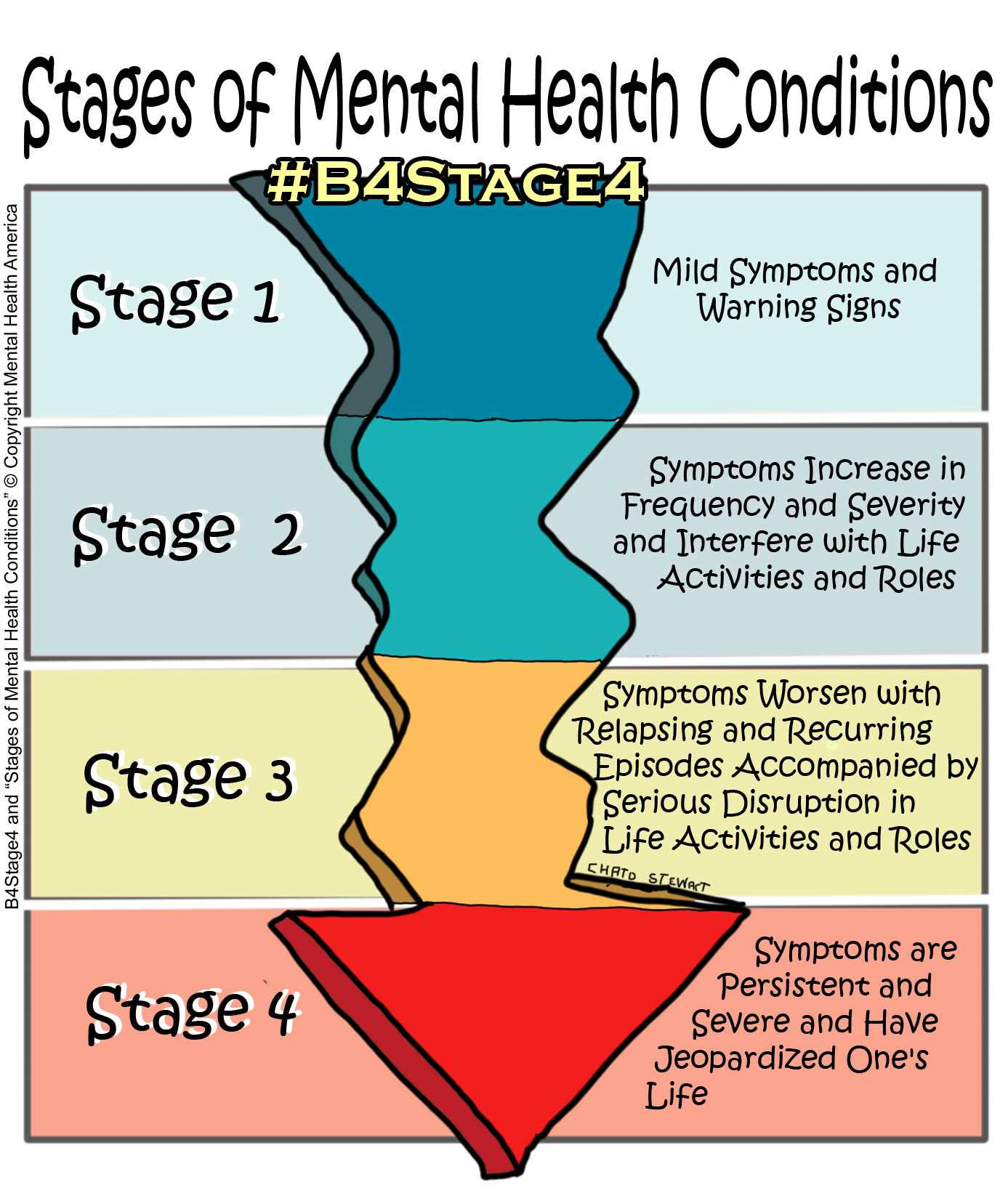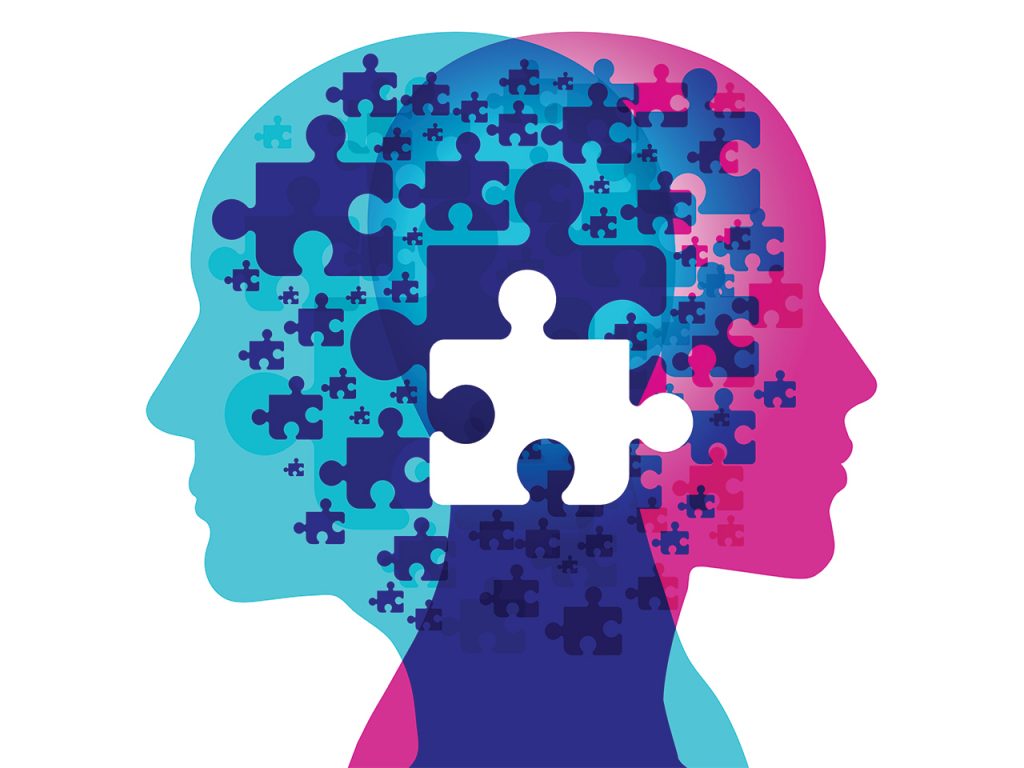When the word “illness” is mentioned, the majority of the population will most likely picture an outwardly noticeable and physical condition that is interrupting the normal functions of a body. Diseases like cancer, congestive heart failure, or diabetes may immediately come to mind when picturing what an “illness” looks like. As humans, we look for outward signals portraying an abnormality when someone expresses their struggles. However, what people do not realize is that some of the most debilitating illnesses are ones that may not be visible to the naked eye. Mental health illnesses are known to affect about 10.7% of the global population (Ritche & Rosner, 2018). That equates to about one in ten people in our world that are currently suffering from a mental illness. Even more astonishingly, these diseases do not garner the attention they should with such a high number of the population being affected. Now, more than ever, it is crucial to speak about mental health illnesses and figure out how we can help decrease the burden of this issue worldwide.
:max_bytes(150000):strip_icc():format(webp)/definition-of-mental-illness-4587855-v1-cd7f9f37c61c49099ac8ede282db1e73.png)
According to a 2001 news release from the World Health Organization, approximately 450 million people worldwide reported that they had suffered from a mental health illness at some point in their lives. In this news release, action was called upon, asking for governments to implement new programs geared towards the suffering population, increase the percentage of their health budgets spent on this specific issue in order to create accessible treatment options for low income populations, and to integrate mental health care into primary health care. It was reported that either one percent or less of healthcare budgets were spent on mental health in more than half of the world’s  countries, amplifying the lack of attention these illnesses receive. In 2001, it was abundantly clear that mental health illnesses were increasing in number and it was becoming imperative for people to acknowledge the severity of this issue. Unfortunately, the warnings and suggestions highlighted in the 2001 reports were not heeded and the abundance of these issues only grew. In 2017, a report from ourworldindata.org estimated that there were 792 million people living with a mental health illness. Just 16 years after the news release from WHO, there was a massive increase in the abundance of these diseases. Now, healthcare systems are taking notice, but these issues are not as easily fixed as they may seem to be.
countries, amplifying the lack of attention these illnesses receive. In 2001, it was abundantly clear that mental health illnesses were increasing in number and it was becoming imperative for people to acknowledge the severity of this issue. Unfortunately, the warnings and suggestions highlighted in the 2001 reports were not heeded and the abundance of these issues only grew. In 2017, a report from ourworldindata.org estimated that there were 792 million people living with a mental health illness. Just 16 years after the news release from WHO, there was a massive increase in the abundance of these diseases. Now, healthcare systems are taking notice, but these issues are not as easily fixed as they may seem to be.
As the rates of mental health illnesses continue to increase, so do the opinions of others who may not identify with suffering from a mental health illness. The stigma  surrounding this particular issue is extensive and is providing barriers that interfere with the quality of care that patients who suffer from these illnesses receive. Many people often stereotype those who have mental illnesses as incompetent, weak, and dangerous. These stereotypes all contribute to how the community treats those who are struggling. Although some are more explicit with their views on mental health illnesses, there are many medical providers who may not realize they are treating these patients with stereotyping attitudes. According to a research study that evaluated the impact of explicit and implicit biases of mental health illness held by medical providers, it was found that there is a mixture of both positive and negative views that essentially contribute towards the care provided. In some cases, providers feel more empathetic towards these populations which often results in very intentional methods of care for these patients. In other cases, implicit biases may creep behind the surface in which a provider may write off the patient’s symptoms. Not only do provider biases create a barrier in treatment options for these patients, but the explicit biases of the general
surrounding this particular issue is extensive and is providing barriers that interfere with the quality of care that patients who suffer from these illnesses receive. Many people often stereotype those who have mental illnesses as incompetent, weak, and dangerous. These stereotypes all contribute to how the community treats those who are struggling. Although some are more explicit with their views on mental health illnesses, there are many medical providers who may not realize they are treating these patients with stereotyping attitudes. According to a research study that evaluated the impact of explicit and implicit biases of mental health illness held by medical providers, it was found that there is a mixture of both positive and negative views that essentially contribute towards the care provided. In some cases, providers feel more empathetic towards these populations which often results in very intentional methods of care for these patients. In other cases, implicit biases may creep behind the surface in which a provider may write off the patient’s symptoms. Not only do provider biases create a barrier in treatment options for these patients, but the explicit biases of the general  population contribute greatly to those who need to seek care. Patients of mental health illnesses are often afraid of the judgement they may face when seeking treatment, as they are afraid to be thought of as “crazy.” It is important to realize that there is an aura surrounding this sector of health that exudes negativity and it can often influence not only the care these patients receive, but also the process of healing for those living with these diseases.
population contribute greatly to those who need to seek care. Patients of mental health illnesses are often afraid of the judgement they may face when seeking treatment, as they are afraid to be thought of as “crazy.” It is important to realize that there is an aura surrounding this sector of health that exudes negativity and it can often influence not only the care these patients receive, but also the process of healing for those living with these diseases.
Another important factor to consider as mental health issues continue to rise involves the access and quality of mental health care. In a study focusing on the inequity in access to mental health care in seventeen different countries varying in socioeconomic status, it was found that in each country at least two thirds of individuals with common mental disorders went untreated (Alegria et al., 2018). This lack of treatment for patients can be attributed to a myriad of things including their eligibility to enter programs, the lack of linguistic capacity of the programs, policies that discriminate based on legal status, a lack of information regarding where and how to obtain care, or logistical, psychological, and economic barriers (Alegria et al., 2018). These issues are very much ones that can be addressed in a better capacity if more of the funding for healthcare is allotted towards mental health disorders. It is imperative that mental health be interwoven within primary care practices in order to decrease the burden of these diseases. Many issues that are associated with patients who are not able to access treatment for their symptoms pertains to their socioeconomic statuses. Policies need to be reviewed, funds need to be allotted, unconscious bias training with providers need to be required, increasing the access of treatment without linguistic barriers are crucial, and the overall stigma of mental health must be discussed as these issues have persisted for far too long.

There are many different types of mental illnesses that people can suffer from. Whether it be depression, anxiety, bipolar disorder, or schizophrenia, treatment should not be considered a luxury. People need to understand the severity of these issues and the support of not only the medical community, but also the general population is required for patients to heal. If someone is suffering or is suspected to be suffering from a mental health disorder, it is imperative that they utilize the resources available to the general population. It is important to check in on family members, co-workers, and friends who may be struggling,  especially amidst the COVID-19 pandemic. The prevalence of mental health illnesses is rising each and every year, and with the recent quarantine orders, the rates of these diseases are only increasing without a sufficient means of assistance for these populations. Mental illnesses should not be stigmatized, stereotyped, or discriminated against. Once we begin to change the language of how we approach this sector of health, the rest of the issues pertaining to mental health illnesses will begin to unravel and improve.
especially amidst the COVID-19 pandemic. The prevalence of mental health illnesses is rising each and every year, and with the recent quarantine orders, the rates of these diseases are only increasing without a sufficient means of assistance for these populations. Mental illnesses should not be stigmatized, stereotyped, or discriminated against. Once we begin to change the language of how we approach this sector of health, the rest of the issues pertaining to mental health illnesses will begin to unravel and improve.


Very thoughtful points! Especially how several people perceive illness only through obvious physical signs.